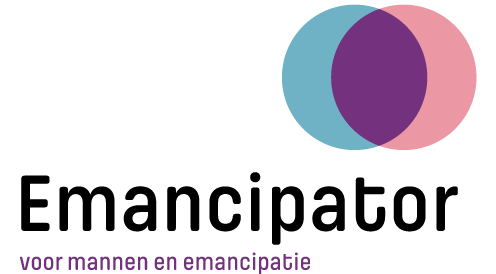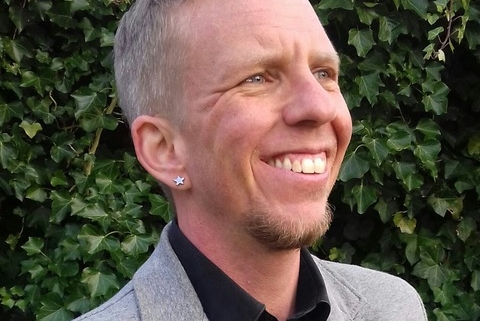Not conforming to the norm is only possible if an alternative is available
Trans man Robert Witte was our reporter at the #IMAGINE2018 Conference ‘Engaging Boys and Young Men in the Age of #MeToo’ and wrote this personal impression about the content.
“Not conforming to the norm is only possible if an alternative is available”
You only know what you were expecting after you enter a room. The IMAGINE conference is bigger en more international than I anticipated on. A lobby, a big hall and six smaller rooms are reserved for us in the luxury Hotel Casa, and the volunteers address everyone in English. Old, young, sneakers, sandals, pointy shoes and pumps (not just worn by women) – it’s all mingling. Considering the topic, Engaging Boys and Young Men in the Age of #MeToo, I assumed that the majority would be men. I realize how naive that assumption is, when the moderator welcomes everyone by saying: ‘This is the first conference where I am actually excited to see so many men. This topic has been discussed by women for years and it is time that men are engaged as well.’
My naivety probably comes from the fact that I am a trans man who has lived ‘as a woman’ during the first fourty years of my life. The #MeToo stories are not new to me. I know they are true, I know that something needs to change in society and I know that that’s only possible if men change their behaviors. Suddenly I realize how well I understand the women’s perspective, in contrast to the men’s perspective. Why do so many men ignore the unspoken signals that women use to make clear that they are not interested in sex? Why do men believe that there is a ‘grey area’? And why would you ever want to have sex with someone who doesn’t want to have sex with you?
The congress is fully booked and the plenary room is packed. The keynote speaker tells about the history of violence against women and emphasizes that we are actually still at the beginning of a new era. The #MeToo hashtag was already coined in 2007 by Tarana Burke, but it seemed too early. Some bigger and smaller protests against sexual violence and abuse of women followed. In 2014, Emma Sulkowicz started their project Mattress Performance (Carry that Weight). For months, they carried a 50-pound mattress everyday to raise awareness to the fact that the student that raped them on that very mattress was never expelled and still at liberty on that university. Even during their graduation, they carried the mattress. The “Grab ‘em by the pussy” quote by Donald Trump led to the #NotOkay hashtag, that was used 2,7 million times. On the 21st of January in 2017, the turn-out at the Women’s March on Washington was huge. And all of a sudden, by the end of 2017, the #MeToo hashtag caught on, which created a focus on female victimhood. ‘But why’, the keynote speaker asks, ‘were a lot of people so surprised by the stories? Surely this wasn’t any news?’
During the break, I notice a sign on every table in the lobby with an image of a flower and a question like: ‘How can boys and men prevent sexual violence against women?’ On each name badge, there is a flower as well, also accompanied with a question. The idea is to encourage people to start a conversation, which doesn’t seem necessary. The atmosphere is relaxed and throughout the day there are groups of people chatting everywhere.
 The flowers on the badges were not picked randomly. The four toxic flowers represent toxic masculinity. Just like men often hide their vulnerability with aggression, these vulnerable flowers defend themselves with poison.
The flowers on the badges were not picked randomly. The four toxic flowers represent toxic masculinity. Just like men often hide their vulnerability with aggression, these vulnerable flowers defend themselves with poison.
After the plenary session, there are three very interesting rounds of Break Out Sessions. The first session I attend is ‘Fatherhood and the Prevention of Violence’. Immediately I hear something that never occurred to me before: the moment a man becomes a father is also the moment when he is very open to change. Every man wants to be a good father, though many men never learned how to do that. If your father would beat you, how do you make sure you don’t also beat your own children? There are so called father groups where men, often for the first time in their lives, open up about their own fathers: absent fathers, violent fathers, drinking fathers. By sharing those experiences in a safe space, these men feel safe to talk about their own behavior as a father. A pedagogue tells about his work with migrant fathers, with whom he talks about raising a child. He explains how he never uses the term ‘domestic violence’, and instead talks about ‘domestic happiness’. Which factors are in the way of domestic happiness? Another person is a coach who guides men in their fatherhood, by looking at their biggest strength: their heart.
As the group discussion starts, I move to another session. ‘Using humour to challenge harmful gender norms’ speaks to me. Unfortunately, I am not the only one who’s into humour, the room is packed and I can’t even open the door. The same goes for the workshops on the Toolkit MÄN (from Sweden) and the Toolkit Emancipator (Dutch). It makes sense, since the toolkit is developed to engage boys and young men and make some real changes in society, which is why everyone is here in the first place. I walk to a far-off room to learn something from ‘How can we encourage more men to take a public stand against VAW?’. VAW is an abbreviation of Violence Against Women. I learn that men can lose their sense of masculinity during a crisis, like losing a job, divorcing, or even having a child. Therefore, those moments are a good time to talk about possible changes of their behaviors. Someone mentions his work with prisoners, where he talks about being brave and working on justice, without specifically mentioning women. It appears that these very masculine men can be the best allies in the fight for equality, because they occupy a position that is completely on the other side, and not at ‘the movable middle’, the big group of ‘moderate men’.
During another break, I see some confused women, because the toilets are gender neutral – there are no gender specific signs. They peak into one restroom and as soon as they notice a man, they hurry into the other room. I am disappointed in the neutral toilets when I enter one and discover a toilet seat that is covered in splashes. Maybe the Toolkit should also involve some instructions on how to leave a toilet decently.
During the Break Out Session ‘Gender inequality in relation to other inequalities’, the room is packed. One woman tells about her research on schools, another woman explains that white and black women have different experiences. The lighter the skin, the less inequality you experience. Race is always I factor, I know that. Sometimes I feel oppressed as a white trans man in this society, but then I think about a non-binary black trans femme, and I realize that some people are in much more difficult positions. I sneak out of this workshop, because I want to make it to the workshop on the Toolkit. A black woman with a headscarf, who is making a phone call in an empty hallway, bursts into tears as I leave the room. We make eye contact and she shouts: ‘My daughter just graduated!’. Next thing I know, we hug each other like old friends that haven’t seen each other in years. ‘Gymnasium’, she cries and I feel goose bumps on my arms. This interaction says a lot about the atmosphere at this conference. Usually I’m not a big hugger, especially if I don’t know the other person, and I assume that this woman normally wouldn’t hug strange men. Here, in this hallway, it seems so normal, and I wish that was more often the case.
The Toolkit workshop, however, is full again, so I move on to ‘Working with boys (from sex specific to gender transformative)’. As I enter, a man is in the middle of a story: ‘… that’s when my partner came out. And immediately you could see a change in the behavior of the kids: they started reflecting on what they had just said. In their eyes, a gay man was not a real man, but the man standing in front of them obviously was.’ I recognize the situation from the time when I gave workshops on transsexuality. Someone mentions how tough it can be for educators to constantly deal with prejudice, and pleas for aftercare within the teams of educators. It sounds very winsome to me.
During the break I hear two men having a conversation on nail polish. The younger one mentions how he sometimes struggles with reactions like: ‘O, you wear nail polish so you must be gay.’ The other one replies: ‘I always say: that’s interesting, why do you think that?’, and then we can have a discussion.’ He also tells about a Spanish young woman who once said: ‘I knew you’re not gay. Because a man who wears nail polish must be very convinced about his own masculinity.’ The conversation makes me think about all the feminine things I would and wouldn’t like to do. I have worn nail polish so many times that I don’t find it interesting anymore. I could grow my nails a little longer though. I hate lipstick, but some mascara or eyeliner might be suitable for when I go to a party for people over 35? I’ll keep it in mind. High heels? No. Boots for men are on my wish list, though.
During the last round of the Break Out Sessions, I have a hard time staying focused. My mind is already filled with all the things that I heard today, that I want to reflect on. I understand more about men and how the system works for them. As a trans man, I was socialized as a girl and woman, which might actually be an advantage, I now realize. Being empathetic, listening, expressing my feelings – I have learned all these things over the years and feel comfortable with it. Ever since I express myself as a man, I get remarks like: ‘You should make an angrier face’, ‘You laugh too much’, ‘Your eyes will always reveal your history as a woman’, ‘You don’t drink beer? I thought you wanted to be a man?’. At the beginning of my transition I would take these remarks very seriously, because yes, I wanted to be a ‘real man’. But always making an angry face and drinking beer just doesn’t suit me. I am kind, empathetic and open, and I like to take care of my body. Why would I let go of that, just to live up to some stereotype? It felt like I would lose a part of myself, if I were to conform to the norms, and I didn’t want that. I transitioned, so that I could be myself. I didn’t transition to go from one straitjacket to another. Years have passed, and now I really don’t care what others expect from a man. In the gym, I switched from fitness to dancing classes, I drink mint tea, I have more female friends than male friends and I cry over movies (and not over soccer matches).
If not conforming to norms of masculinity was hard for me at the age of forty, than imagine what it must be like for teenage boys. From their earliest days, they get all these messages on how to be a man. This only increases during their puberty. Peer pressure, fathers that want to turn them into ‘real guys’, coaches screaming ‘Hey, you’re not a pussy, are you?’, movies and videogames full of stereotypes – how do you let that roll off? That’s only possible if an alternative is at hand, if you have role models to look up to, or if you’re very confident from an early age. I realized that I would lose a part of me if I would conform to the norm, and that is probably what happens to a lot of boys in their puberty: the pressure of being a ‘real man’ and the lack of alternatives makes them lose a part of their identity. They start behaving different, which leads to frustration, and this frustration turns into aggression towards women, gays, transgender people and people from different cultures. Not because they want to, but because they feel pressured to do so.
The eye openers I got today, will need some more time to process. But one thing is for sure: making an end to toxic masculinity is not just beneficial for women, but definitely for boys and men as well. I hope the toolkit will find its way to many schools, communities and organizations in the Netherlands and beyond, to create a better society for everyone.
Robert Witte




